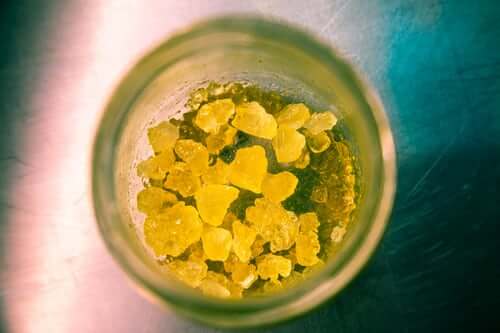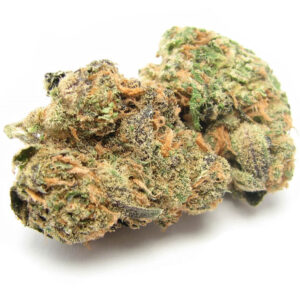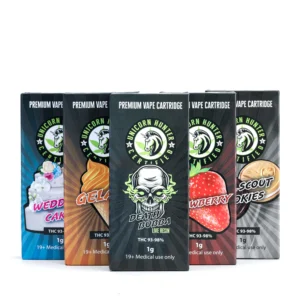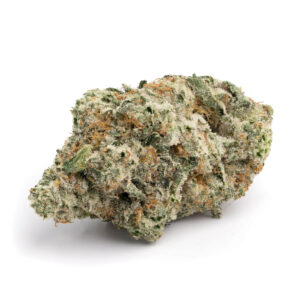As the name suggests, cannabis concentrates are a more concentrated version of the plant’s natural compounds. Cannabis concentrates include hash, oils, tinctures, hash, shatters, all the way up to the purity of isolates and distillates. But not all concentrates are extracts because an extraction technically requires the use of a solvent.
Does all that already sound overly-complicated? If you’ve never taken the time to consider the technicalities of a concentrate, let alone the production methods behind cannabis extracts for sale, the subtle differences are a bit confounding.
For the everyday smoker, these differences may not ultimately matter. But if you consider yourself a true cannabis sommelier and a passionate advocate for the flower, you’ll want to know the critical differences between concentrates and extracts.
What is a Cannabis Concentrate?
According to the Webster Dictionary, to concentrate is “to make less dilute” or “to express or exhibit in condensed form.” Cannabis concentrates are the less dilute or condensed form of the original plant material.
What’s more, humans have been working with condensed forms of weed for thousands of years. Concentrates, like oils and hash, have a long history of use for spiritual and medicinal purposes. From the archeological evidence in China to ancient temples in Israel, cannabis concentrates are an important part of human history.
But what exactly is getting concentrated? Marijuana naturally produces hundreds of different compounds, but two types are particularly important: cannabinoids and terpenes.
You may already be familiar with cannabinoids like THC and CBD, but there are over a hundred more. Terpenes are essential oils and the plant’s natural defence mechanism. Together, cannabinoids and terpenes create the magical and uplifting experiences we all love so much.
Cannabis flowers produce the most cannabinoids and terpenes. Once ready, producers harvest buds coated in a thick layer of crystals. These are trichomes, or glands, which have pumped out these deliciously potent cannabinoids and tasty terpenes.
Cannabis concentrates, from kief to shatter to isolates, collect the trichomes to produce a highly concentrated product.
What is a Cannabis Extract?
But not all concentrates are extracts. Technically speaking, cannabis extracts for sale all use solvents to help with the production. There are, of course, solventless extractions. Ancient Egyptians didn’t exactly use butane and CO2 to pump out cannabis concentrates. But, in today’s market, most cannabis concentrates use solvents — making them extractions.
There are just about as many ways to make a cannabis extract as there are different cannabis strains. Every producer has a different approach. For simplicity’s sake, however, let’s review one of the most common production methods: butane extractions.
To create butane honey oil (also called butane hash oil, or BHO), manufacturers combine dried flower (or hash) with butane. Using high pressure and often high heat, they flush the solvent through the flower to pull out all the valuable compounds. Once washed, producers use high heat to evaporate the butane completely. What’s left is a pure, clean, cannabis extraction.
But Why Do You Need Solvents?
You might wonder why you even need solvents, to begin with. Solvents have the unique ability to wash off the sticky, resinous trichomes. Some of the most common solvents used today include butane, propane, ethanol and CO2. These are preferred because they are highly volatile, making it easy to turn up the heat and purge from the final extraction. With a proper purge, there should be zero measurable leftover solvents on the extract.
If you think it’s only the ‘dirty’ cannabis industry that uses solvents, think again! Solvents have a long history of use across foods, pharmaceuticals, and supplements. The processes used in cannabis are established as safe, clean, and are well regulated.
Common Cannabis Concentrates that Do No Use Solvents
What kinds of cannabis concentrates exist which don’t use solvents? With thousands of years of practice, humans have figured out several effective ways to condense cannabis resin into a potent concentrate.
Kief
Kief, also called pollen, is the most straightforward concentrate. It is the collection of crystals from cannabis flowers. Kief is typically sold in small containers as a loose powder, although it may also get pressed into pucks. You can even collect kief yourself by using a grinder with a kief collector. Sprinkle on a joint, or pack into a bowl, and an elevated experience awaits you.
Hash
Hash is a cannabis concentrate with a long history of production. It requires the collection of sticky resin into a brick, ball, or another form. If you have ever trimmed a fresh flower before, you may have made finger hash. As you trim, your fingers collect the sticky trichomes, and when rubbed together, your hands’ natural heat melts it into a workable form. This is hash, although there are now much more advanced methods of production than your sticky fingers.
Rosin
An advanced solventless concentration method uses high heat and high pressure to pull out the cannabinoid and terpene-rich oils. In the early days, producers used t-shirt printing presses to achieve the heat and pressure needed, but these days there are specially designed rosin presses.
Common Cannabis Extracts
With the rise of legal cannabis extracts for sale has come innovations in extraction tech. Today, most extracts you find online are produced using solvents like butane, ethanol, CO2 or another petrochemical. These products go through rigorous testing to ensure they are free from contaminants and impurities before being sold.
Butane Honey Oil
BHO remains a popular sticky, molasses-like extract. Very simply, it’s using butane to extract the valuable trichomes. The butane is purged, leaving behind a dark and potent sticky cannabis oil.
Shatters, Waxes, Budders, Saps, Sugars etc
Almost all of the dabbable extractions on the market today come from a butane extraction. The final colour, texture, and consistency all come down to the original plant material and the final finish. Different cannabinoid and terpene combinations create different textures. Producers can also add a few post-extraction flourishes to create a whipped or budder like consistency.
Distillates and Isolates
If kief is the simplest concentrates, distillates and isolates are by far the most complicated. Distillates and isolates condense cannabis into a single compound, usually THC or CBD. All other natural compounds, including the terpenes, are removed. The final product can reach up to 99 percent purity.
Cannabis Extract Vs. Cannabis Concentrate: It all Comes Down to Solvent
If you have ever dabbed a shatter, sprinkled a joint with kief, or packed a bowl with hash, you’ve experienced cannabis concentrate. Concentrates offer a highly potent, elevated experience than what you would get from straight dried flower.
But not all concentrates are extracts. Shatters, budders, waxes, and isolates all require solvents for production, which means they are extracts. Often extracts are more potent than concentrates (but not always). Whether you are into cannabis extracts for sale or stick with solventless concentrates, it’s all up to you.






